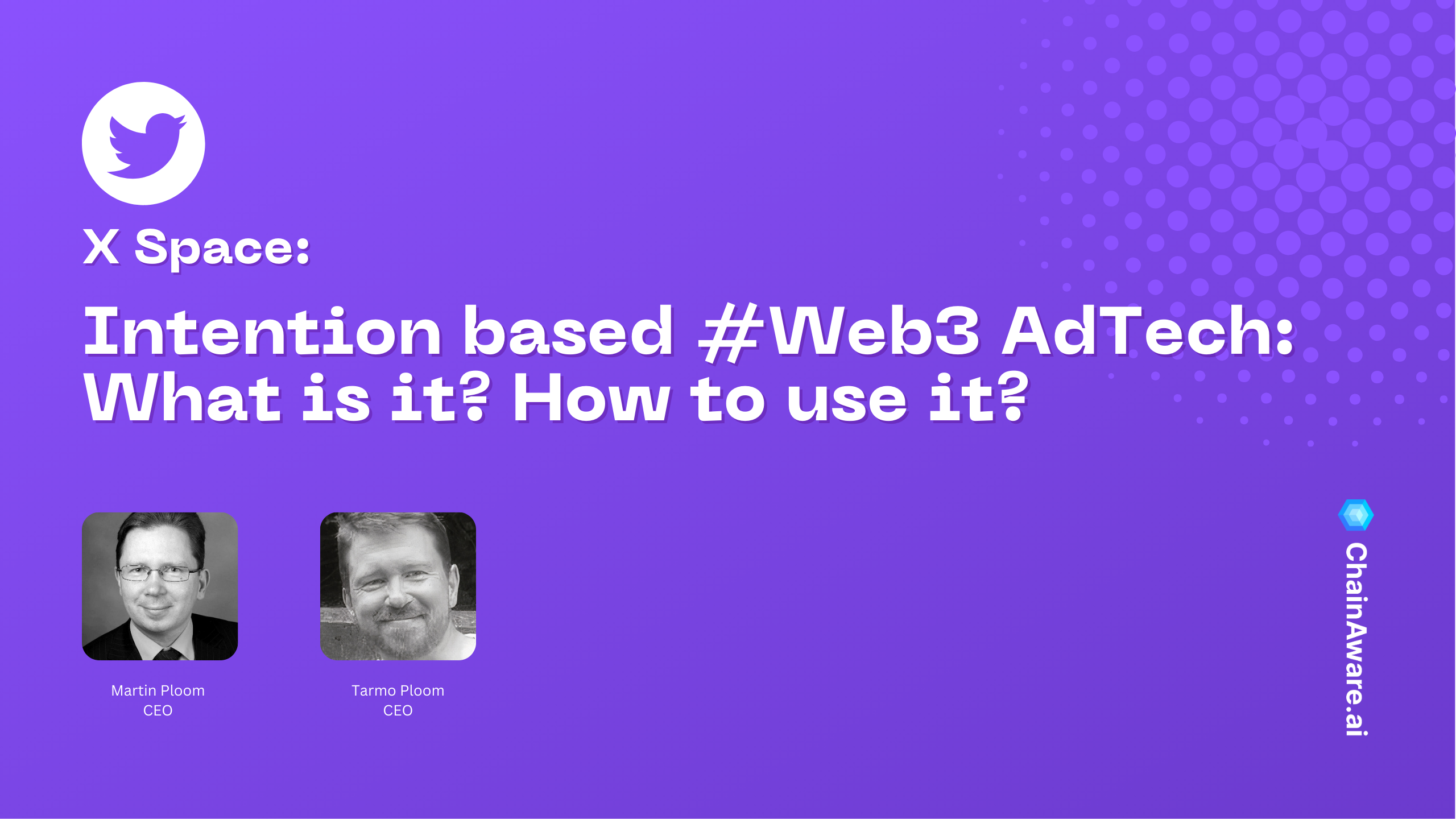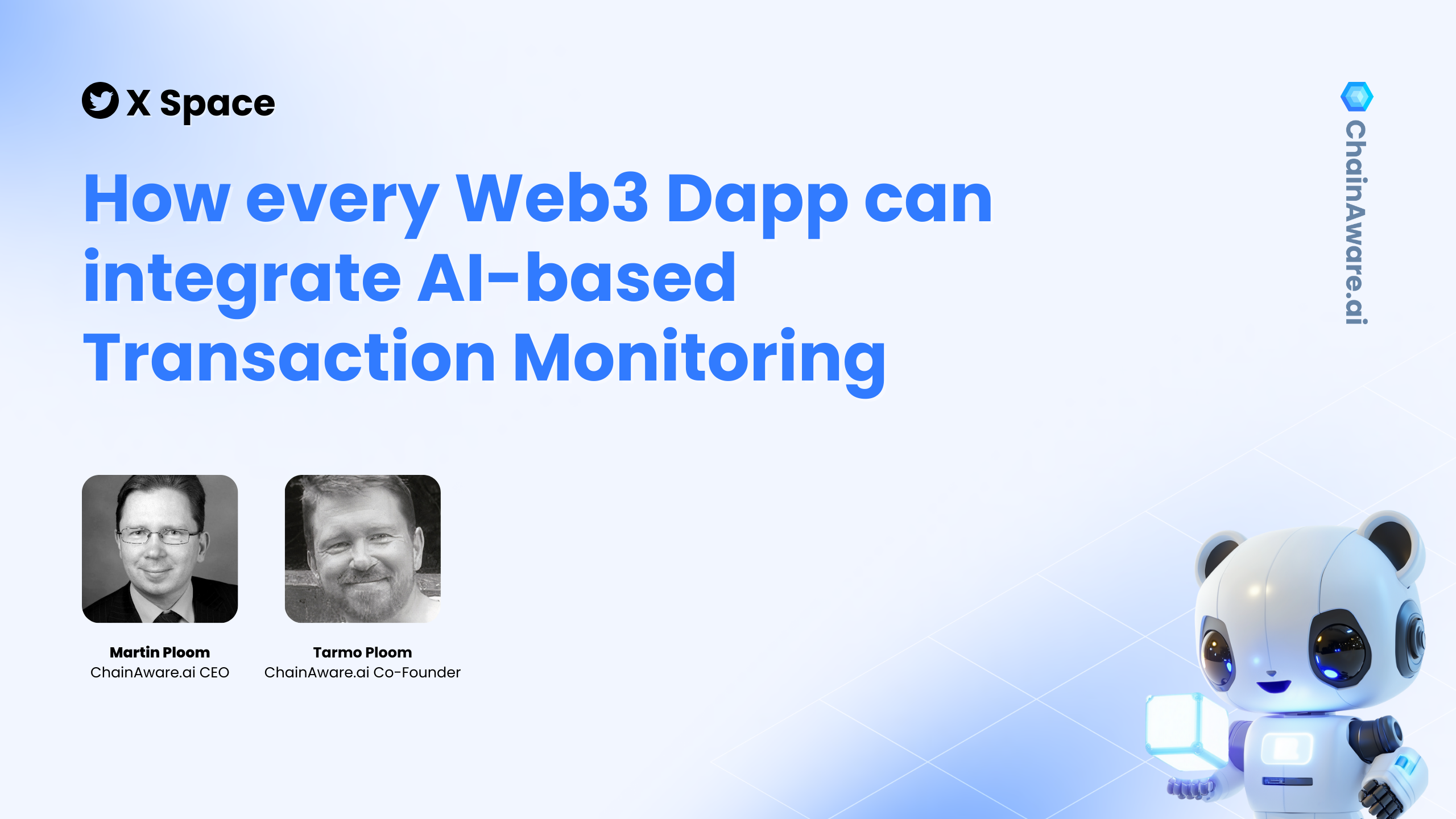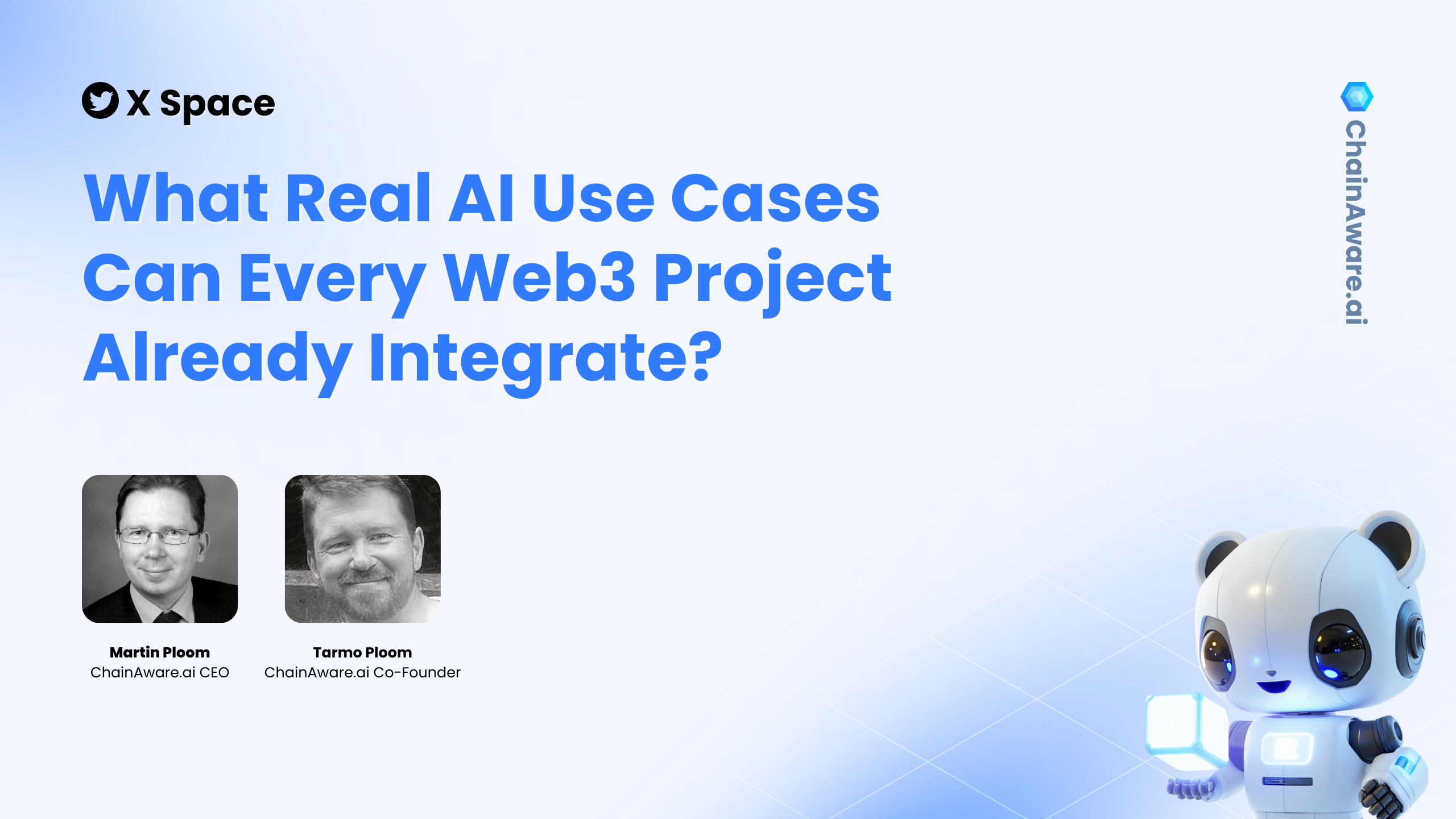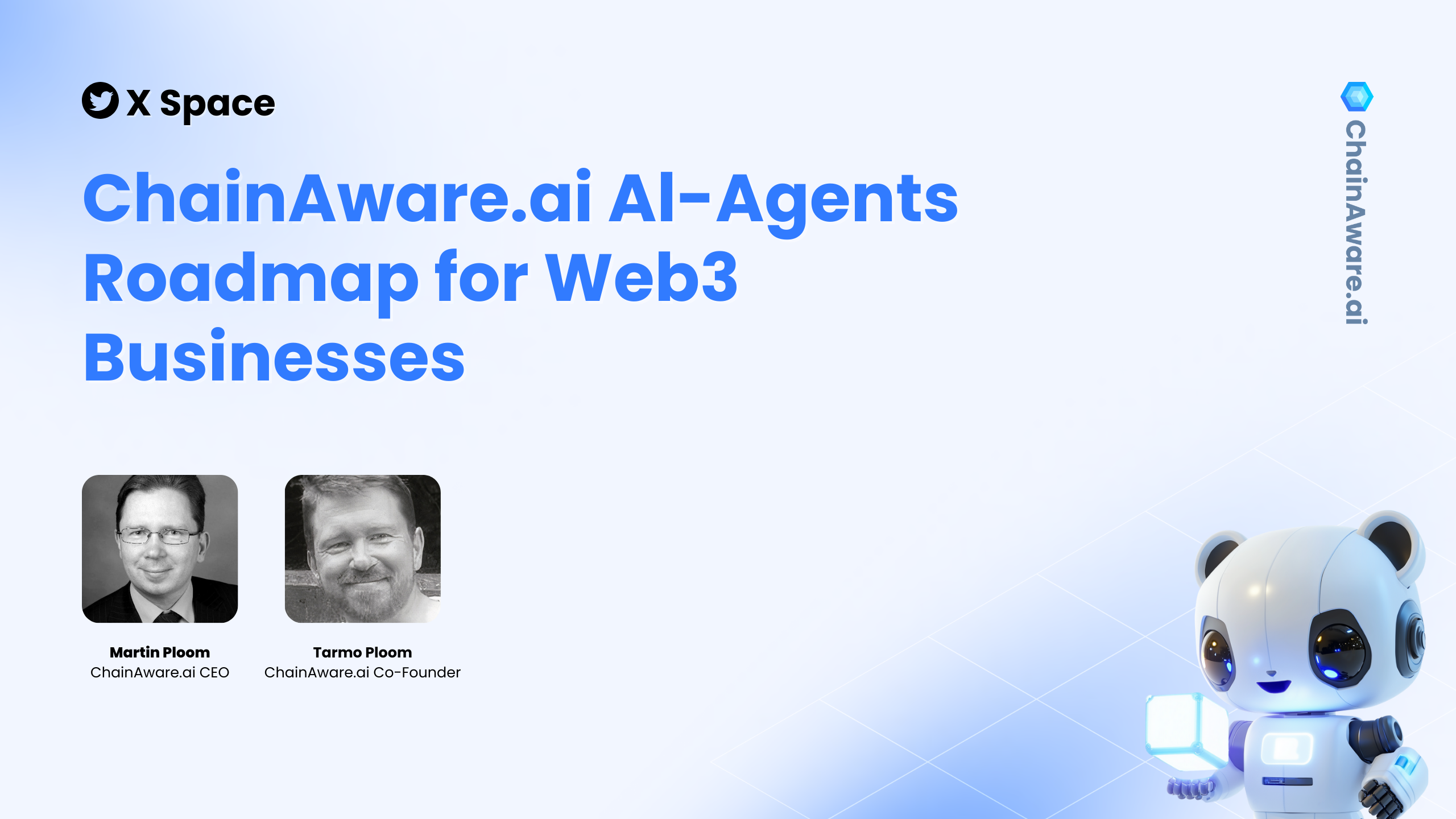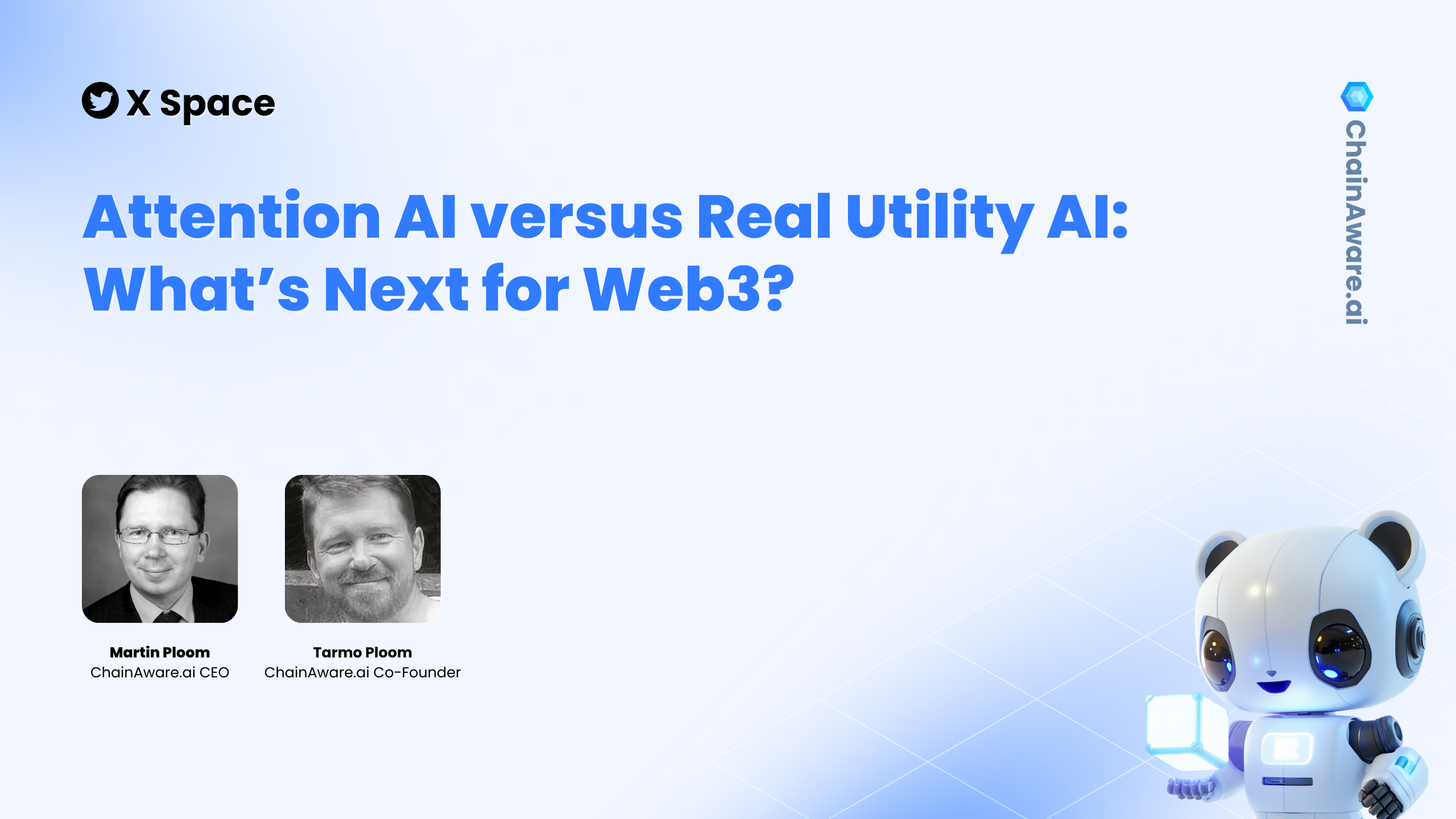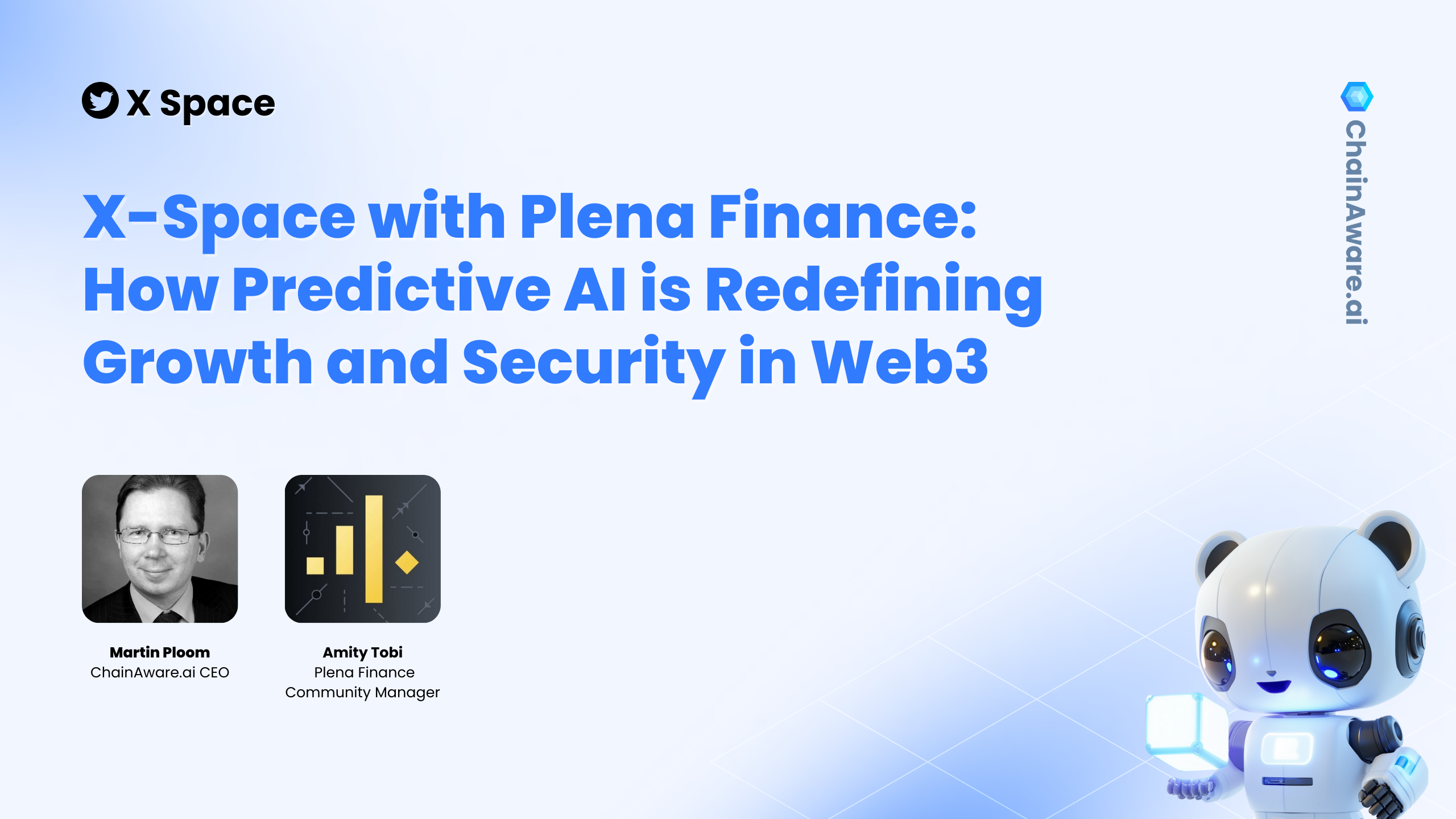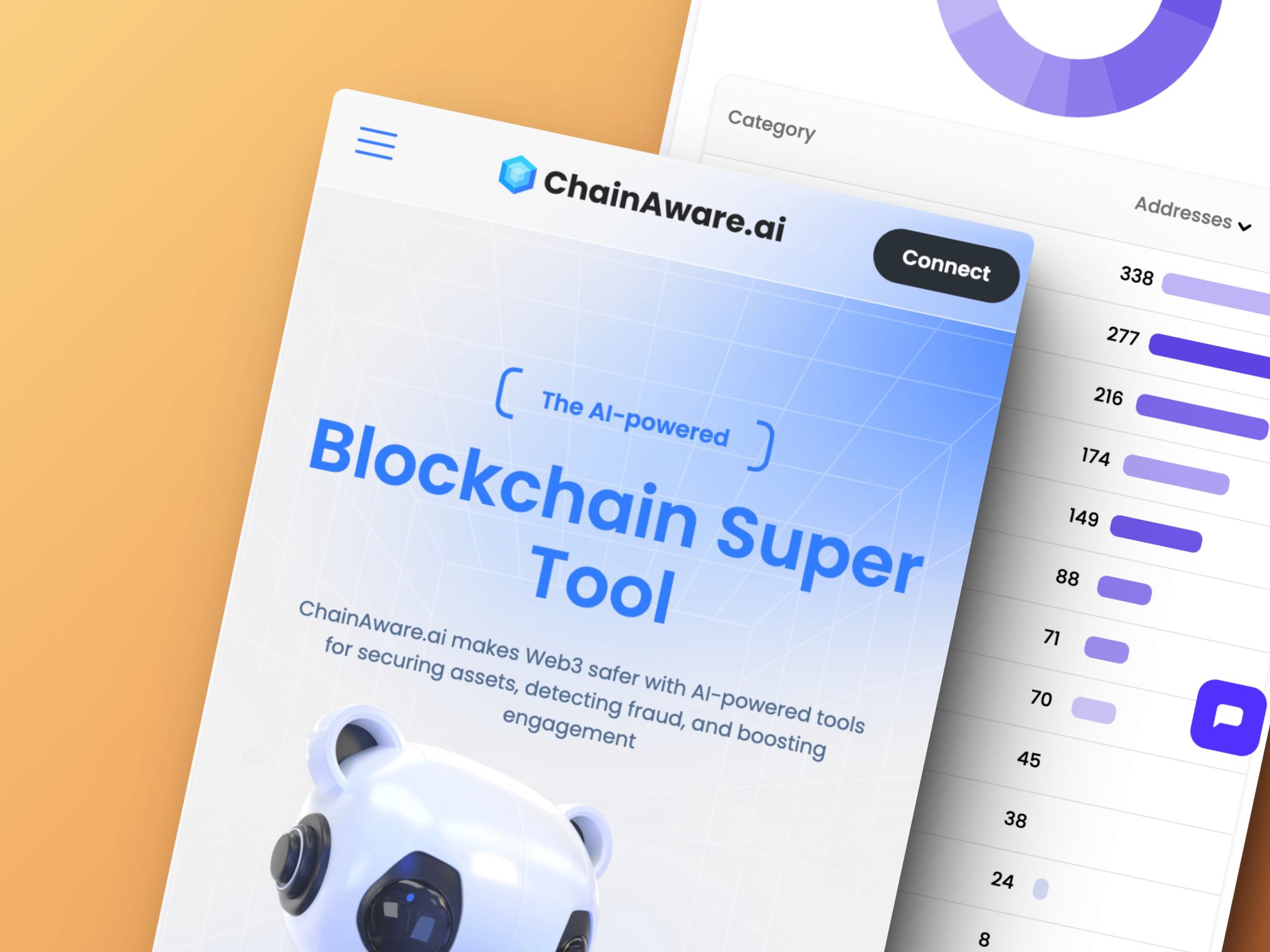In Web3, 99% of marketing is still based on outdated mass marketing strategies, resulting in high user acquisition costs and low conversion rates. ChainAware.ai offers a breakthrough with AI-based, intention-focused marketing, providing a smarter, sustainable solution for Web3 projects to grow and become profitable.
1. Introduction
Welcome to XSpace #20, where Martin and Tarmo discuss the transformative potential of intention-based marketing for Web3. Martin, a co-founder of ChainAware.ai, and Tarmo, a seasoned architect and co-founder of Genove, bring insights from decades in fintech and AI-driven adtech. Today’s topic centers on how intention-based marketing, powered by AI, can revolutionize Web3’s approach to user acquisition and customer retention.
2. Understanding Intention-Based Marketing
Intention-based marketing is distinct from traditional mass marketing approaches. While mass marketing relies on broad demographic categories like geography or age, intention-based marketing targets users based on specific psychological and behavioral data:
- Risk Preferences: High, medium, or low risk tolerance.
- Investment Behavior: Understanding whether the user is an innovator, early adopter, or part of the early majority.
- User Intentions: Behavioral insights that reveal the user’s potential actions, such as their readiness to buy, borrow, or trade.
This highly targeted approach allows companies to tailor messages to users who are more likely to respond, reducing cognitive overload and improving engagement.
3. The Problem with Mass Marketing in Web3
Web3 marketing largely relies on mass outreach methods, including:
- KOL (Key Opinion Leader) Marketing: Despite widespread use, KOL-based campaigns often show limited effectiveness, leading to poor conversion rates.
- Display Ads and Crypto Media: Prominent placements on sites like CoinGecko or CoinMarketCap are expensive but often ineffective in drawing quality users.
- Hype-Driven Marketing: Strategies centered on hype may attract token buyers, but they rarely engage users in a sustainable, meaningful way.
This approach creates a “noise” problem, where potential users feel overwhelmed by irrelevant messages, leading them to tune out or exit the ecosystem altogether. This trend not only wastes resources but also contributes to high customer acquisition costs.
4. The Success of AdTech in Web2 and Lessons for Web3
Web2 faced similar challenges early on. Initial user acquisition costs were high, but AdTech innovations—particularly those driven by intention-based targeting—helped reduce these costs drastically. Today, Web2 companies acquire users for around $15–$30 per transacting user, thanks to:
- Intentions-Based Ads: These are personalized ads shown only to users with the right behavioral characteristics.
- Adaptive User Interfaces: User interfaces in Web2 platforms adjust based on a user’s previous interactions and intentions.
The result? A streamlined ecosystem where users are more likely to find relevant products, making for higher conversion rates and sustainable growth.
5. How ChainAware.ai Applies Intention-Based Marketing to Web3
ChainAware.ai has developed proprietary AI models that predict user intentions based on blockchain data, offering a new path for Web3 projects. Here’s how it works:
- Blockchain Data Analysis: ChainAware analyzes user interactions on Ethereum and BNB chain protocols to build behavioral profiles based on transaction histories.
- Intention Prediction: These profiles are used to predict future behaviors, such as investment tendencies or likely engagement levels.
- Targeted Ad Delivery: By pairing intention predictions with ad targeting, ChainAware ensures that users see messages relevant to their interests and behaviors, leading to better engagement and higher conversion rates.
Unlike mass marketing, which floods users with generalized content, ChainAware’s approach shows only resonant messages to those who are likely to act on them.
6. The Role of AdTech as the Invisible Hand
AdTech acts as an “invisible hand,” bringing the right users to the right products at the right time. In Web2, this function was crucial for mainstream adoption. Similarly, in Web3, effective AdTech will help bridge the gap between innovative projects and their target users.
ChainAware.ai’s ad targeting system for Web3, which operates with public blockchain data, can drastically reduce acquisition costs by tailoring messages to individuals rather than broadcasting to the masses.
7. Reducing Cognitive Overload and User Acquisition Costs
Today, Web3 companies face acquisition costs of $1,000 per transacting user, a rate that is simply unsustainable. ChainAware’s intention-based marketing model addresses this by:
- Minimizing Cognitive Overload: Users receive fewer, more relevant messages, which prevents them from feeling overwhelmed.
- Lowering Acquisition Costs: When projects can focus their resources on users likely to convert, they significantly reduce their cost per user acquisition.
The result? An ecosystem where projects can operate profitably and sustainably without resorting to hype or “pump-and-dump” strategies.
8. Lessons from Web2’s Journey: Building Sustainable Growth in Web3
As Web2 matured, it overcame early high acquisition costs by adopting efficient AdTech. Similarly, Web3 projects must transition from mass marketing to targeted, intention-based marketing if they are to achieve sustainable growth.
ChainAware.ai offers a ready solution. Its intention-calculating engine taps into high-quality blockchain data, allowing projects to focus their marketing on users who are most likely to convert, helping Web3 avoid the pitfalls of the early Web2 era.
Conclusion
For Web3 projects to scale and reach profitability, they must move away from inefficient mass marketing and adopt intention-based strategies. ChainAware.ai’s technology provides the invisible hand that will enable Web3 projects to attract the right users, at the right time, with the right message. By embracing intention-based marketing, Web3 can follow in Web2’s footsteps, making the leap from early adoption to mainstream success.
The future of Web3 lies in creating resonant, personalized experiences. For projects seeking long-term growth, intention-based marketing is not just an option—it’s a necessity.
